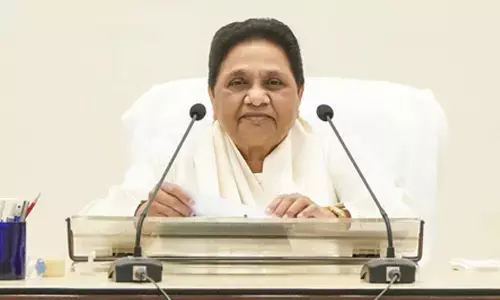Bridging modernity and tradition in India’s design education

To transform India’s design legacy for a global future, it must blend cultural richness with cutting edge skills
“Design is so simple; that’s why it is difficult.” Most of us have heard this famous quote by the legendary American graphic designer, Paul Rand. In the context of Indian education, design is often perceived as a straightforward but incredibly complex discipline. It offers special opportunities as well as challenges of its own. This contradiction captures the heart and essence of design education, where the ease of use (simplicity) conceals the difficulty of developing imaginative brains.
In India, every element of life is infused with design, from the well-crafted products to the diverse cultural practices, rituals, and cus-toms that differ from one state to the next. Despite this rich history and heritage, traditional methods fall short of maximizing the promise of this rapidly evolving area. This has caused Indian design education to frequently lag behind. However, given how quickly things are changing around the world, it is the need of the hour to re-evaluate and revitalize design education in India.
In the past, industrialization led to development and changes in design education in the West, with an emphasis on bridging the gap between university and industry. In the paper ‘Design as a catalyst for learning’, Davis et al. (1997) mention that education is focused on designing products or places. In the 1970s, innovative American programs started investigating the function of design. These delved beyond the mere manufacture of products to include the design of urban areas and larger social and environmental contexts.
Two architects, Richard Wurman (who later came up with the popular idea of TED—Technology, Entertainment, Design- a plat-form for short speeches on diverse topics) and Alan Levy founded GEE (Group for Environmental Education). This initiative focused on the design of urban spaces, why they were the way they were, and what factors determined the design of the spaces. Another unique program in 1975 that stimulated analysis of objects, com-munication, and the surroundings was ‘Problem-solving in Manmade Environment’. This was created by the Cranbrook Acad-emy of Art and was for 7th grade students studying social studies in five hundred schools in Michigan. It integrated hands-on assign-ments to demonstrate ways in which design was critical in shaping the social and physical look of the surroundings. Right from early education, design thinking was incorporated through innovative programs. Charles Burnette, director of industrial design, founded design-based curricula for K–12 students. This was an extension of his course, Design with Kids, which trained teachers in a 7-step de-sign method. Started as a program for teachers, it was later inte-grated into the university’s art education curriculum to promote creativity, finding design solutions, and technological inventions.
This shows how design education can change lives when it breaks down barriers. There is strong evidence to support the dire need to integrate design thinking into the educational system in India. The previous education system highly depended on rote learning and rigid curricula. A revamp of the education system and the integra-tion of design thinking into it can help develop the problem-solving and artistic abilities required in the modern world.
Furthermore, with technological innovation and the introduction of Artificial Intelligence (AI), the importance of design education has never been greater. Even while AI offers unprecedented opportuni-ties and possibilities, it cannot imitate the unique and distinctive creative expressions that come from an individual designer’s man-ual talents. To effectively use AI tools for creative voices, students must have a solid foundation in traditional design processes.
At present, it is important for educators to review the lesson plans, learning goals, and assessments on a regular basis. Working to-gether with design institutes in India and throughout the world can not only help promote the exchange of creative concepts but also bring out the industry’s best practices. To keep design education relevant, there is a need to be open to new ideas and paradigms and adopt continuous learning. The future of design education in India lies in our ability to balance the richness of our culture with the needs of an evolving global world. To ensure that India’s design legacy survives and thrives in the 21st century and beyond, we need to develop a new generation of designers who are rooted in tradition while possessing cutting-edge skills.
(The author is the Head of Design, Art, and Performances at FLAME University, Pune)



















